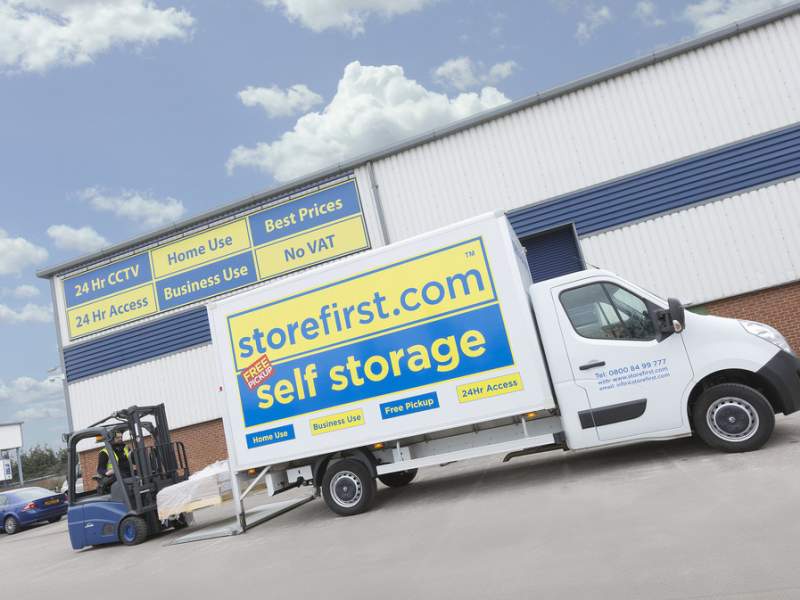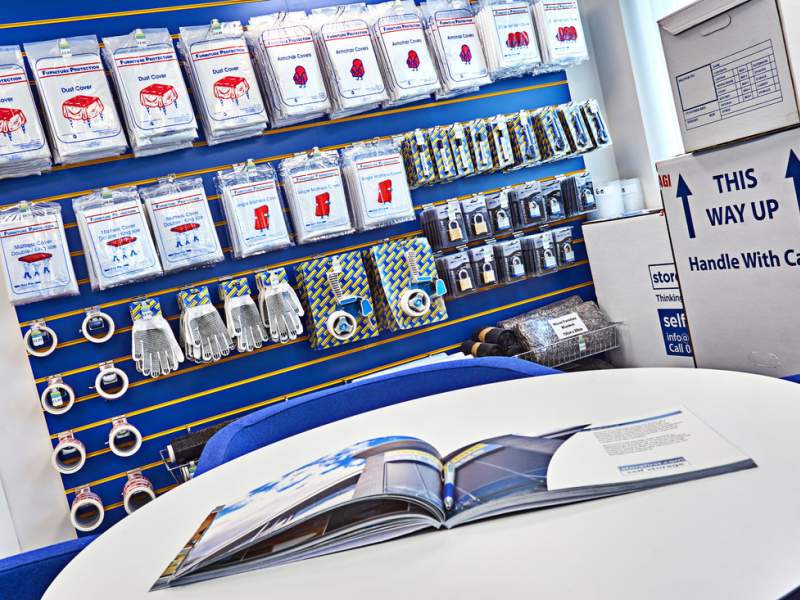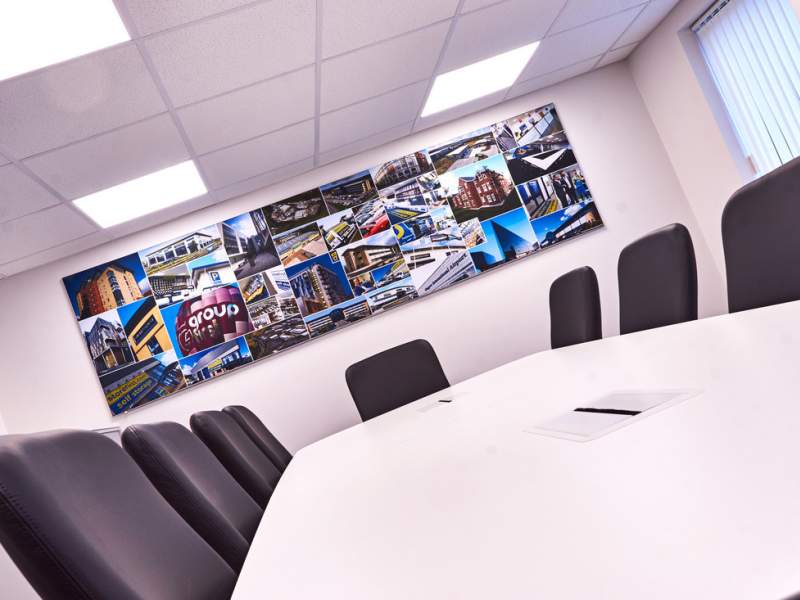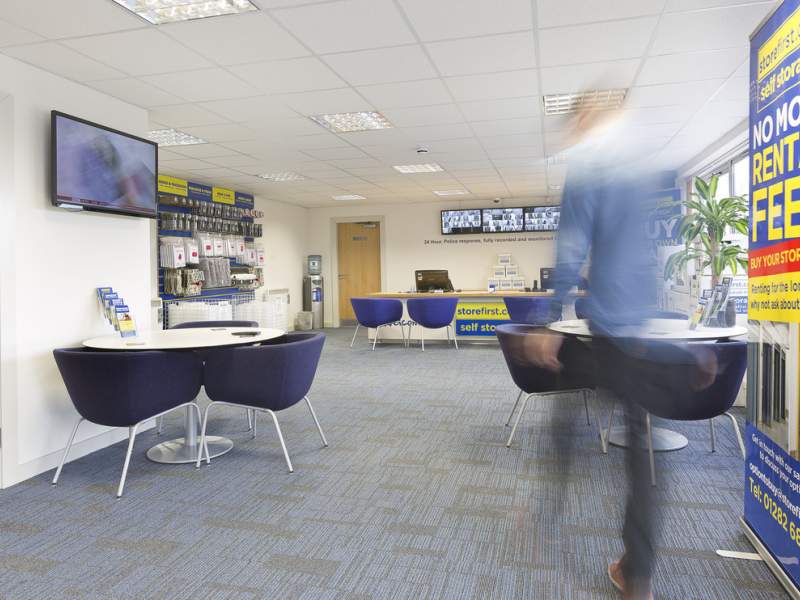Step 1
Plan what you will store.
Start by identifying items that will be packed in boxes and stacked.
Prioritise boxed items you will want to access most frequently (they’ll go closer to the front of the unit).
Group by fragility or weight – heavier, sturdier items should be stored on the bottom of stacked items, fragile items on top.
Consider awkwardly-sized items that won’t stack well, including how often you will need to use them, and how heavy they are.
Step 2
Choose the right size unit.
Nobody wants to pay for storage they don’t need. But a little extra space makes moving around within the unit much easier. It also gives you room to add those unplanned items that always seem to pop up.
Our experienced and friendly storage facility staff will be happy to help in determining how much space you will need. You can visit any of our stores for a free tour and to view various storage unit sizes.







This storage unit is similar in size to around four fridge freezers.
This storage unit is similar in size to an average garden shed.
This storage unit is similar in size to the capacity of a transit van.
This storage unit is similar in size to the capacity of a removal van.
This storage unit is similar in size to a single garage.
This storage unit is similar in size to a large garage.
This storage unit is similar in size to a double garage.
Step 3
Organise and pack your items with a plan in mind.
Organising and efficiently packing your items will take time and concentration. However, the up-front effort will be well worth it when you’re able to easily unload and organise your items at the storage unit. Here are some tips for packing:
- Invest in Supplies. A range of customer made packaging materials are available in all of our stores or you can use your own.
- Use boxes, not plastic bags. Boxes are sturdier and stack well, taking up less space. Also, sealed plastic bags can trap humidity which can cause damaging mildew.
- Invest in good quality, sturdy boxes and packing materials. Boxes should be sturdy enough to hold up for years under the weight of the stack. You may be tempted to get boxes for free from supermarkets and other stores; however, the mismatched shapes and sizes will impede your ability to organise most effectively. You can buy standard-sized boxes and speciality boxes for items such as TVs, etc. This can work out cheaper for you in the long run as you optimise your storage space and do not pay for space you don't really need.
- For wrapping breakables, paper will do, but bubble wrap can be used repeatedly, is cleaner, and because it is transparent, makes identifying contents easier.
- Most people end up needing more tape than they thought they would when packing. Our self-storage staff can help you estimate how much tape you’ll need for the number of boxes you’ll be packing.
- Box up everything that you can. Anything left unboxed in a self-storage facility can get dusty.
- Fill boxes to capacity. The contents in half-empty boxes can shift during transport or lifting. Corners and sides can collapse if there’s nothing to support them.
- Distribute the weight in packed boxes evenly. Make sure they are not too heavy for you and others who may be lifting them.
- Wrap all fragile items and breakables such as dishes, glasses, ornaments, etc. separately. Pack these items tightly into strong or reinforced boxes, filling any gaps with paper or filler. Mark “Fragile” on any boxes containing breakable items.
- Clearly label all boxes on more than one side so you can easily identify the contents.
- Pack books flat to avoid damaging their spines.
- If you plan to store clothes, think about investing in a wardrobe box with a built-in hanging rod.
- Wrap mirrors and pictures in protective covering such as bubble wrap and mark them as “Fragile.” Cardboard corners can be made to protect the sharpest, weakest areas of frames.
- Separate lamp bases and lampshades and wrap them for protection.
- If you're storing upholstered products such as mattresses and sofas, consider investing in covers, bags or sheeting for additional protection.
- Vacuum-sealed bags work really well for draperies, bedding, and clothing.
- Electrical equipment such as TVs, stereos, and computers should be packed in their original boxes whenever possible. If using other boxes, choose ones that are as close in size to the original as possible, and fill all gaps with paper.
- Disassemble furniture such as beds and tables before you store them. Wrap and cover the separate sections, clearly mark them and keep them together. Keep assembly components such as screws and bolts together in a plastic bag, mark them clearly, and tape the bag to the appropriate piece of furniture. (Use tape that is safe for use on furniture, or tape the bag to an inconspicuous place on the piece.) Cover chair legs with bubble wrap or rags for extra protection.
- Spray your wood furniture with a good quality furniture polish before storing it to give it some added protection.
- Treat leather items with a leather conditioner before you store them.
- Wipe down metal objects and tools with a little oil before storing them to avoid rust formation that can occur when the tools are not used regularly.
- When storing a vacuum cleaner, clean out the bag or canister first; bacteria, mold and vermin can accumulate otherwise.
- When storing an oven as well as a refrigerator, enclose the exposed back area of the appliances to deter vermin
- As you go, keep an inventory of every item you’ve packed. Ideally, include an estimate of the replacement value of each item you store. Consider taking pictures of valuable items. These steps will help you make accurate insurance claims in case of unforeseen damage or loss.
- Defrost refrigerators and freezers thoroughly to avoid water damage and mildew growth. Tie down the appliance doors during transport, but leave them slightly ajar once in storage.
- Drain washing machines, and tie down hoses and cords before storing them.
- It’s a good idea to wipe down the inside of appliances with baking soda before you store them to keep them dry.
Step 4
Unpack and arrange items efficiently.
As you arrive at the facility and begin to unload, arranging your furniture, equipment, boxes, and other odds-and-ends efficiently in your storage unit will make a big difference in maximizing its convenience. Here are a few tried-and-true suggestions for putting items into your unit:
- Plan ahead
- While your storage unit should already be clean and swept out, consider putting down protective canvas sheeting, cardboard or wooden boards on the floor for cleanliness.
- Keep a fold-up step stool in your space for accessing hard-to-reach areas.
- Frequently-used items should be placed near the entrance for easy access. This holds true for file boxes and other business items, too.
- To ensure security of valuable items such as computers or TVs, place them farthest from the door, with other items concealing them.
- Unload the largest items and place them against the far wall, as well as along the sides of the unit. We have trollies that you can use to unload and place these heavy items FREE of charge.
- For archived business documents that you won’t need to access frequently, place them against the far wall of the unit.
- When arranging items, leave an aisle space for easy access to your items. You can either leave aisles between your stacks of boxes and furniture, or line up all your furniture and boxes against the outside walls of the unit in a “U” shape, leaving the inside of the U as open space.
- Break down furniture into smaller pieces, if possible. Take the legs off of tables, disassemble bed frames and lean them against the wall, etc.
- Cover furniture with sheets or tarps to protect them against scratches, dust and other damage.
- Store large pieces of furniture vertically to save space. Stand sofas on end when possible.
- Chairs can be stacked seat to seat.
- In most cases, you can stack dryers on top of washers.
- You can tie tools and long-handled items such as rakes, snow shovels and brooms in bundles. Or, put them inside bins to keep them neat.
- Mirrors and framed artwork should never be stored flat, as they can collapse under their own weight.
- Be sure when stacking boxes and containers that you can clearly see the labels you put on them.
- When stacking boxes, always make sure to put the heaviest boxes at the bottom to avoid damage.
- Stack boxes and similarly sized items together to save space.
Be creative - you can use virtually all of the space in and around your stored furniture, including other items, as places to store more items. Fill anything that's hollow with items to maximize your available space:
- Furniture drawers are good for storing fragile items
- Stack the shelves of bookcases with books, small boxes and other odds and ends
- Store boxes containing fragile goods inside of wardrobes
- Store pillows, blankets and other bedding inside washers and dryers
- Store clothes inside dresser drawers
You may be thinking that all this planning, preparing and setting up your self-storage unit may seem like a big project. You’ll find the time and effort are worth it, though, when you discover the peace of mind that comes with knowing your belongings are protected, conveniently accessible and well-preserved.






















































































































































































